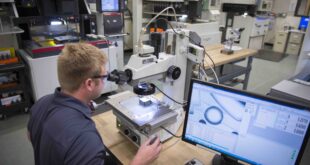Economic growth could slow down if the rising gap between demand for and supply of engineers is not addressed globally, according to research by The Queen Elizabeth Prize for Engineering. The findings, part of the QEPrize Create the Future report, which discussed a range of engineering issues with 10,000 people across 10 countries, highlight the reliance on engineering to drive global economic growth, with a clear increase in demand for engineers in many countries.
Markets including the UK (63%), US (59%), China (63%), Germany (62%) and South Africa (67%) all stated demand for skilled engineers was higher than the supply of jobs.
The report revealed that overall more than half of those polled (53%) felt there was a demand for skilled engineers which wasn’t being matched by supply.
The results have been released on the same day that the Queen Elizabeth Prize for Engineering announces the opening of public nominations for the 2019 QEPrize, with the winner/s to be announced early next year.
Now entering its fourth cycle, the QEPrize celebrates the very best in international engineering.
The six international experts to the highly prestigious judging panel are:
* Professor Jim Al Khalili, Professor of Public Engagement in Science, University of Surrey, journalist and broadcaster (UK)
* Professor Mary Boyce, Dean of Engineering at The Fu Foundation School of Engineering and Applied Science, Columbia University, New York (USA)
* Professor Jinghai Li, Vice President, Chinese Academy of Science (China)
* Ilya Marotta, Executive Vice-President of Engineering and Programme Management, Panama Canal Expansion Project (Panama)
* Dr RA Mashelkar, President, Global Research Alliance and Chairman, National Innovation Foundation – India (India)
* Professor Henry Yang, Chancellor, University of California, Santa Barbara (USA)
The judging panel is tasked with identifying the engineer/s responsible for a ground-breaking innovation that has been of benefit to humanity
Previous winners include:
* The creators of the Internet and the World Wide Web – Robert Kahn, Vinton Cerf, Louis Pouzin, Tim Berners-Lee and Marc Andreessen (2013)
* The inventor of slow-release controlled drug delivery systems – Robert Langer (2015)
* The creators of digital imaging sensors – George Smith, Michael Tompsett Nobukazu Teranishi and Eric Fossum (2017)
Lord Browne of Madingley, Chairman of the Queen Elizabeth Prize for Engineering Foundation, said: “The findings of the Create the Future Report highlight the public’s understanding that we do not have the requisite engineering skills to match both demand and our rate of innovation.
“This under supply of engineers will hinder long-term global economic development.”
The Queen Elizabeth Prize for Engineering
The Queen Elizabeth Prize for Engineering is an international £1 million prize that celebrates the engineers responsible for a ground-breaking innovation that has been of global benefit to humanity.
The objective of the QEPrize is to raise the public profile of engineering and to inspire young people to become engineers.
Winners of the 2017 QEPrize
Four engineers responsible for the creation of digital imaging sensors – Engineers Eric Fossum (USA), George Smith (USA), Nobukazu Teranishi (Japan) and Michael Tompsett (UK) – were awarded the 2017 Queen Elizabeth Prize for Engineering, receiving the £1 million prize.
They received the prestigious award for their contributions in revolutionising the way we capture and analyse visual information.

The prize was awarded for three innovations spanning three decades, which have radically changed the visual world; the charge coupled device (CCD), the pinned photodiode (PPD) and the complementary metal oxide semiconductor (CMOS) image sensor.
Together, this image sensor technology has transformed medical treatments, science, personal communication and entertainment.
Thanks to this series of engineering innovations, today’s cameras can fit on a fingertip and are found in countless portable devices around the world.
Every second, around 100 cameras are made using CMOS technology, allowing us to share in excess of 3 billion images a day.
From uploading photographs and videos to social media, to enabling autonomous vehicles or biometric fingerprint recognition on smartphones and tablets, the global use of digital imaging has grown at a phenomenal rate.
 Engineer News Network The ultimate online news and information resource for today’s engineer
Engineer News Network The ultimate online news and information resource for today’s engineer


